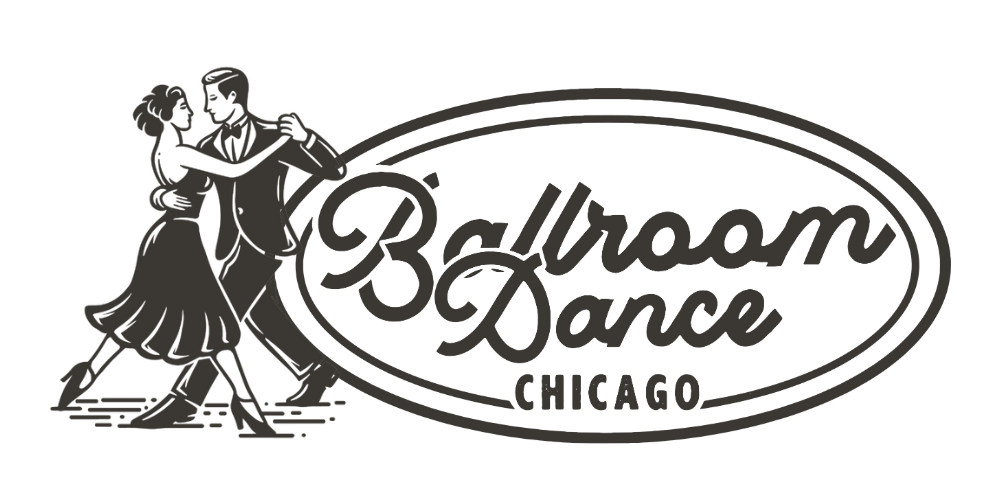BDC Credo: The Joy of Dancing
At Ballroom Dance Chicago, we’re constantly examining and exploring our roles as dancers, teachers, and inspired individuals in the lives of our students and the wider Chicago community. To deepen and expand our understanding of these roles, we’ve taken to individually writing and sharing our responses to some of the principles we’ve devised to guide Ballroom Dance Chicago.
What is the joy of dancing?
Matthew Sove:
Partner dancing is a strange thing in our culture because most people don’t grow up doing it (especially guys). And beyond this type of dance that we teach, movement itself is something that our culture doesn't really value (the arts are at the bottom of the value scale and dance is at the bottom of the arts scale). Once we’ve learned to crawl and walk, we’re not really taught to explore movement. This is especially obvious when we go to school and we’re taught to sit still with our feet on the ground and focus on the blackboard. Our bodies become useful in that they get our brains from classroom to classroom and eventually from meeting to meeting. We have our daily visit to the treadmill to keep our bodies healthy so our brains can live longer. But the reality is that our bodies offer us way more than just a vessel for our ideas. And our bodies (brains included) need more than just a bit of cardio to thrive.
Essentially what learning to dance does is bring us back to a joyous time when we moved for the sake of movement and readily connected with other people without some ulterior motive for seeking that connection. Think back to when we were kids playing with the neighborhood kids and losing hours in whatever silliness we got into that day. There was infinite lightness then. And we think learning to dance brings us to a similar lightness.
Lydia Feuerhelm:
Dancing is a way of feeling unified with both yourself, other people, and the world around you.
As human beings, we live in a body. And it seems as though most of the time, people are only subtly aware of that. They see the bodily experience as a separate entity, rather than another dimension of themselves. By referring to “my body,” to this thing that I own, that I carry around with me, we’ve denied the very notion that the body is, in fact, the very central part of our human existence.
The fact is, the known part of the human experience begins and ends with the occupation of a body, but the dedication to developing one’s capabilities as a body occupant fall short compared with developing one’s mind or soul. The joy of dancing is contained in its ability to release us from the over development of our thinking faculties. By simply doing, by forgetting to over analyze, and by letting go for our bodies to work seamlessly, we’re allowing ourselves to experience life on a different plane.
Dancing (and playing!) is a way of reclaiming our bodies that not only allows us to experience ourselves in a different light, but allows us to connect to others in a new way. Think back to when you were a child and in games, there was very little emphasis placed on devising rules, regulations, and outcomes, but rather there was a focus on movement, engagement, and discovery through doing. That same necessity of learning by doing is present in dancing. Through trial and error, you’re able to develop a new relationship not only with the body that you occupy, but with your loved ones, friends, and even strangers.
Cathy Gilpin:
Not many things are universally understood. For example, there are about 6500 different languages that people are using to communicate with one another around the world. That means that with anyone you encounter, you have a 1 in 6500 chance that you’ll be able to understand each other through verbal communication. One of the things (among many) that we love about dance is that it is a form of expression that can be understood and shared worldwide.
Dancing can be used to send messages when there aren’t words to capture the emotion you're feeling. This is because there are an infinite amount of ways to move our body to express emotion, but there are only a limited number of words. The act of dancing is usually a joyful experience, even when you are expressing feelings of pain because it uses your full body moving and working together. This act alone releases endorphins into the brain, and it’s no secret that exercising regularly helps you to keep your mind healthy. So maintaining any practice of mind body connection can bring joy to your life. It feels good to know what your body is capable and then explore, discover new ways of moving and pushing yourself to do cooler, more interesting things.
